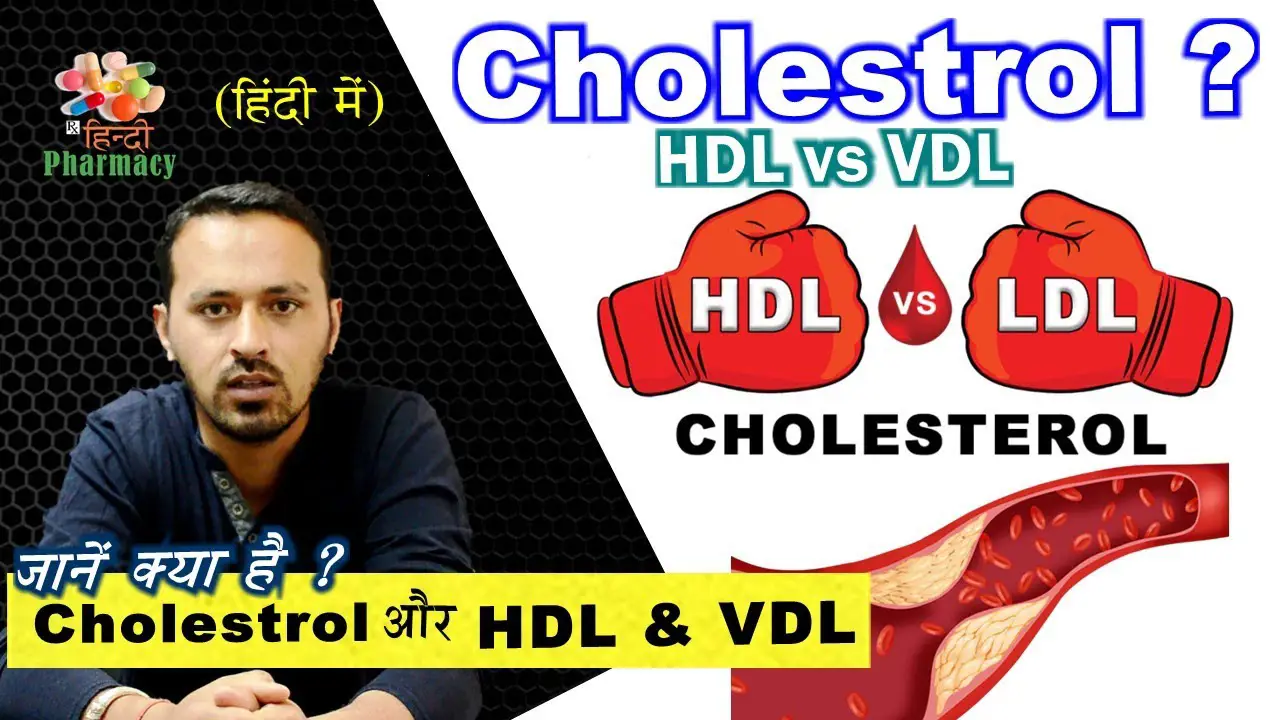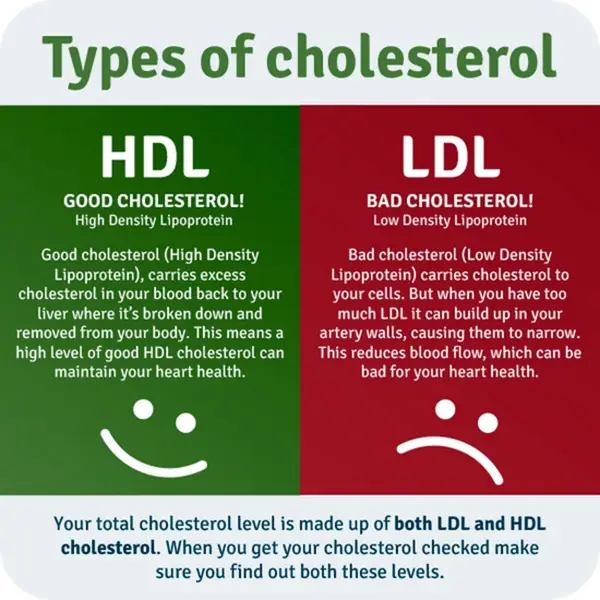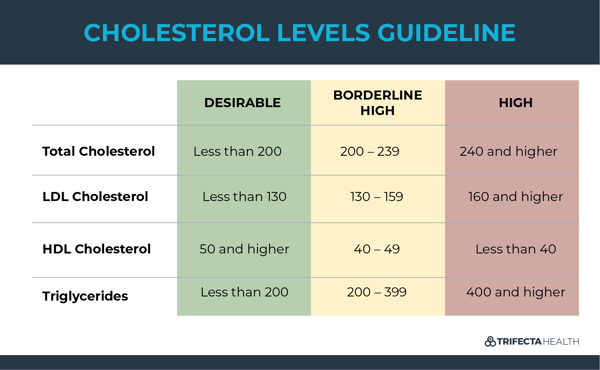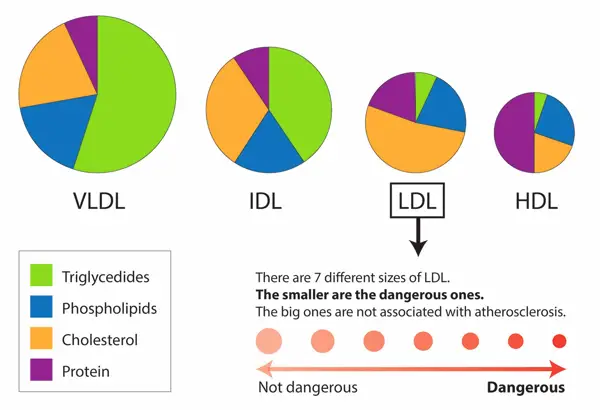Table of Contents
- What is VLDL Cholesterol?
- High VLDL Cholesterol Levels
- Causes of High VLDL Cholesterol
- Health Impacts of High VLDL Cholesterol
- Treatment Options for High VLDL Cholesterol
- Prevention of High VLDL Cholesterol
- Diet and Exercise Tips for Managing VLDL Cholesterol
What is VLDL Cholesterol?
Very low-density lipoprotein (VLDL) cholesterol is a type of cholesterol that is produced in the liver and is responsible for carrying triglycerides through the bloodstream. It is considered a "bad" cholesterol because high levels of VLDL can increase the risk of heart disease.
High VLDL Cholesterol Levels
High VLDL cholesterol levels are a sign that your body is producing too many triglycerides. This can lead to the build-up of plaque in the arteries, increasing the risk of heart attacks and strokes.
High VLDL cholesterol levels are associated with an increased risk of cardiovascular disease. VLDL (very low-density lipoprotein) is a type of cholesterol that carries triglycerides through the bloodstream. When levels of VLDL are elevated, it can lead to the build-up of plaque in the arteries, increasing the risk of heart attack and stroke. It is important to monitor and manage high VLDL cholesterol levels through a healthy diet, regular exercise, and possibly medication as prescribed by a healthcare provider.

Causes of High VLDL Cholesterol
There are several factors that can contribute to high VLDL cholesterol levels, including genetics, diet, lack of exercise, obesity, and certain medical conditions such as diabetes and hypothyroidism.
VLDL cholesterol, or very low-density lipoprotein cholesterol, plays a key role in transporting triglycerides throughout the body. When levels of VLDL cholesterol are high, it can be indicative of several underlying causes.
1. Genetics: High VLDL cholesterol levels can be inherited from one or both parents, leading to a condition known as familial hypertriglyceridemia.
2. Unhealthy diet: Consuming a diet high in saturated fats, trans fats, and sugar can increase VLDL cholesterol levels, as these nutrients are converted into triglycerides by the liver.
3. Obesity: Excess body weight, particularly around the abdomen, is associated with elevated VLDL cholesterol levels due to increased triglyceride storage in fat cells.
4. Sedentary lifestyle: Lack of physical activity can lead to imbalanced lipid metabolism, resulting in higher levels of VLDL cholesterol.
5. Insulin resistance: Individuals with insulin resistance or diabetes may experience higher VLDL cholesterol levels, as insulin plays a role in regulating triglyceride synthesis and release.
It is important to address the underlying causes of high VLDL cholesterol through lifestyle modifications, such as adopting a healthy diet, engaging in regular exercise, and managing conditions like obesity and diabetes to reduce the risk of cardiovascular disease. Consulting with a healthcare provider is recommended for proper diagnosis and treatment.

Health Impacts of High VLDL Cholesterol
High VLDL cholesterol levels can increase the risk of developing heart disease, stroke, and other cardiovascular issues. It is important to monitor your cholesterol levels and take steps to lower them if they are high.
High levels of Very Low-Density Lipoprotein (VLDL) cholesterol in the body can have detrimental effects on overall health. VLDL is a type of cholesterol that is produced by the liver and plays a role in transporting triglycerides throughout the bloodstream.
When VLDL cholesterol levels are elevated, it can increase the risk of developing cardiovascular diseases such as heart attack and stroke. This is because high VLDL levels can lead to the buildup of plaque in the arteries, restricting blood flow and increasing the likelihood of atherosclerosis.
In addition, high VLDL cholesterol can also contribute to other health issues such as obesity, diabetes, and metabolic syndrome. It is important to monitor and manage VLDL cholesterol levels through lifestyle changes such as regular exercise, a healthy diet, and potentially medication prescribed by a healthcare professional.
By maintaining healthy VLDL cholesterol levels, individuals can reduce their risk of developing serious health complications and improve their overall well-being.

Treatment Options for High VLDL Cholesterol
Treatment hindi high VLDL cholesterol levels may include lifestyle changes such as adopting a healthy diet and exercising regularly, as well as medication such as statins to lower cholesterol levels.
High VLDL cholesterol levels can increase your risk for heart disease and stroke. It's important to take steps to lower your VLDL cholesterol levels. Here are some treatment options:
- Healthy Diet: A diet low in saturated fats, trans fats, and cholesterol can help lower VLDL cholesterol levels. Focus on eating plenty of fruits, vegetables, whole grains, and lean proteins.
- Exercise: Regular physical activity can help lower VLDL cholesterol levels and improve overall heart health. Aim for at least 30 minutes of moderate exercise most days of the week.
- Medications: In some cases, your doctor may prescribe medications to help lower your VLDL cholesterol levels. These may include statins, fibrates, or niacin.
- Weight Management: Losing excess weight can help lower VLDL cholesterol levels. Aim for a healthy weight through diet and exercise.
It's important to work closely with your healthcare provider to determine the best treatment plan for your high VLDL cholesterol levels. By making lifestyle changes and following your doctor's recommendations, you can lower your risk for heart disease and stroke.

Prevention of High VLDL Cholesterol
Preventing high VLDL cholesterol levels involves maintaining a healthy lifestyle, including eating a balanced diet low in saturated fats and cholesterol, exercising regularly, and avoiding smoking.
High VLDL cholesterol levels are a risk factor for cardiovascular disease, so it is important to take steps to prevent this condition. To lower your VLDL cholesterol levels, it is recommended to follow a healthy diet low in saturated fats and trans fats. Incorporating more fruits, vegetables, whole grains, and lean proteins into your meals can help improve your cholesterol levels. Regular exercise and maintaining a healthy weight are also crucial in preventing high VLDL cholesterol. Additionally, limiting alcohol intake and avoiding smoking can also lower your risk of developing this condition. By making these lifestyle changes, you can effectively reduce your VLDL cholesterol levels and protect your heart health.

Diet and Exercise Tips for Managing VLDL Cholesterol
Include foods rich in omega-3 fatty acids, such as fatty fish, nuts, and seeds, in your diet to help lower VLDL cholesterol levels. Exercise regularly to maintain a healthy weight and improve overall cardiovascular health.
If you have high VLDL cholesterol levels, it is important to make lifestyle changes to lower your risk of heart disease. Here are some tips to help you manage your VLDL cholesterol through diet and exercise:
Diet Tips:
- Limit your intake of saturated fats and trans fats, as they can raise VLDL cholesterol levels.
- Focus on eating more fruits, vegetables, whole grains, and lean proteins.
- Incorporate foods rich in omega-3 fatty acids, such as salmon, flaxseeds, and walnuts, into your diet.
- Avoid sugary drinks and foods high in added sugars, as they can increase VLDL cholesterol levels.
- Choose healthier cooking oils, such as olive oil or avocado oil, over butter or lard.
Exercise Tips:
- Aim for at least 150 minutes of moderate-intensity aerobic exercise each week, such as brisk walking or cycling.
- Incorporate strength training exercises into your routine to help improve your overall cardiovascular health.
- Stay active throughout the day by taking short walks, using the stairs, or participating in active hobbies.
- Try to maintain a healthy weight through a combination of diet and exercise.
Remember, it's important to consult with your healthcare provider before making any major changes to your diet or exercise routine. By following these tips, you can help manage your VLDL cholesterol levels and reduce your risk of heart disease.

Key Takeaways
- High VLDL cholesterol levels can increase the risk of heart disease and stroke.
- Genetics, diet, lack of exercise, and obesity are common factors that contribute to high VLDL cholesterol levels.
- Treatment for high VLDL cholesterol may include lifestyle changes and medication.
FAQ
Q: Can high VLDL cholesterol be reversed?
A: High VLDL cholesterol levels can be managed and reduced through lifestyle changes and medication prescribed by a healthcare professional.
Q: How often should I get my cholesterol levels checked?
A: It is recommended to have your cholesterol levels checked every 4-6 years, starting at age 20, and more frequently if you have risk factors for heart disease.



Recent Comments